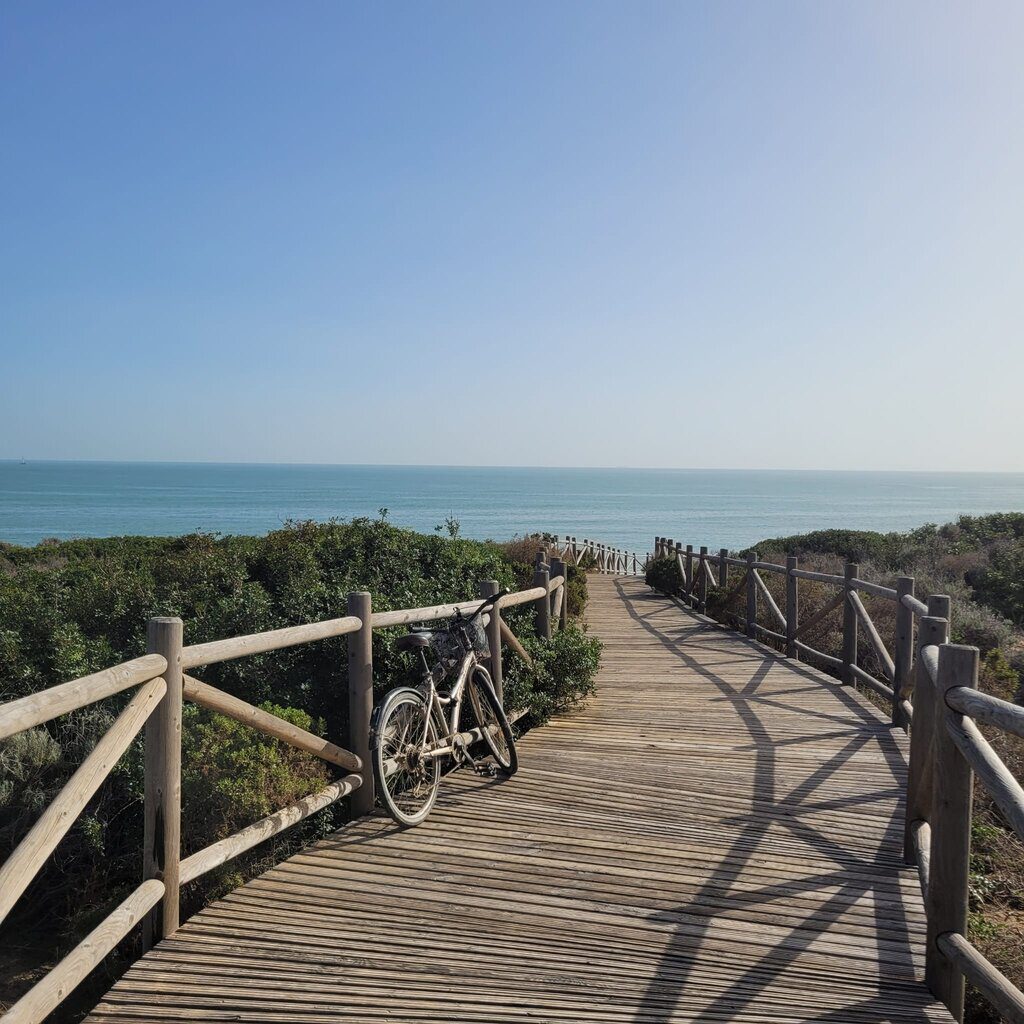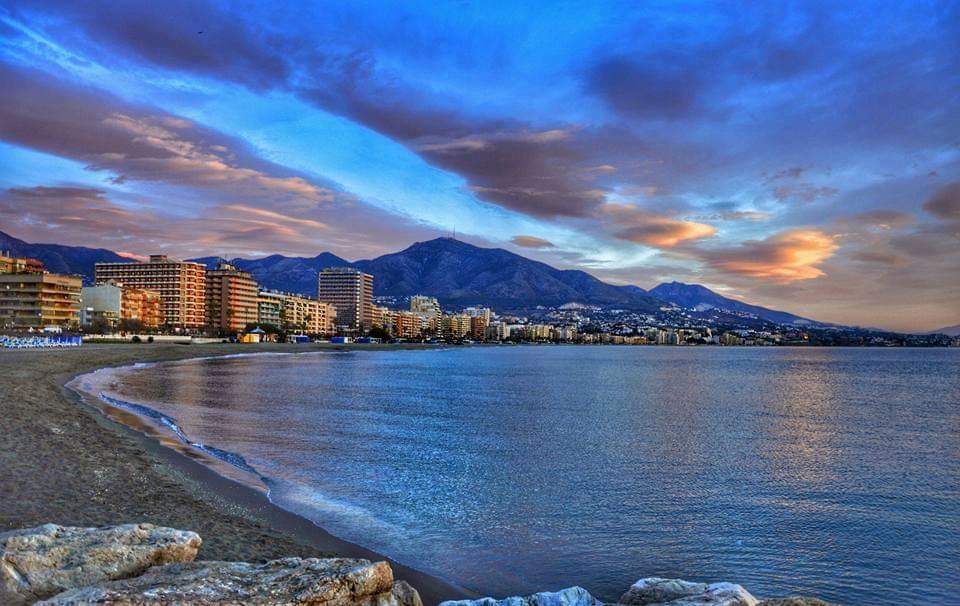Trips Costa del Sol
Because Tennis Academy Nikita would like you to enjoy your sporting holiday but also discovering Andalucia with trips around the beautiful Costa del Sol.
The Costa with its hinterland has a beautiful nature and lovely places with a very rich history.
The Costa is more than just sun, sea and beach!
You can go out for your trips yourself, but we also have contact with companies that organize the trips. These guide you and bring you to the most beautiful places, at extremely reasonable amounts. On this page you will find a number of trips, contact us to set up an interesting program.

Places you must see!
The trips can be put together for groups of 4 to 40 people or possibly more.
Fuengirola

This famous resort has the longest beach promenade in Spain and is located about 10 km from Calahonda. The promenade El Paseo Maritimo Rey de España lives up to its name because it has a length of no less than 7 km and runs from the southern beach El Ejido to the most northern beach of Torre Blanca. Fuengirola has 7 fantastic beaches where you can do the most imaginable water sports. In addition, there are many beach bars on the boulevard and you should certainly visit one of the inviting chiringuitos for a delicious grilled fish dish such as the Espeto de Sardinas with a cool cerveza or a tinto de verano. Also visit the church at Plaza de Constitución of Fuengirola with its beautiful square and many terraces. Cheap and yet delicious tapas food you do in one of the charming streets around the square.
Castillo Sohail
At the beach of El Ejido you will also find the Castillo Sohail, a former Arabic castle. The castle was built in the tenth century by the Moorish general Abd al-Rahmain III. Nowadays, many music festivals are held in the castle.
Plaza de constitución
Cozy square near the church at the Plaza de Constitución with many restaurants and terraces. Especially in the evening very cozy and a must. All streets and alleys around the square contain countless bars and restaurants at affordable prices. On the square is the ‘Arból de las pelotillas’, a fig tree that was planted about 150 years ago. You will also find the monument that is dedicated to the Constitution (Constitución). Opposite the tree is ‘La Iglesia Parroquial Virgen del Rosario’, the main Catholic attraction. The parish building is built in Baroque style.
Finca del Secretario
Av. Nuestro Padre Jesús Cautivo, 71,
In the north of Fuengirola lies the Yacimiento Romano Finca “El Secretario”. Here are excavations from Roman times. The discovery of the archaeological site was done during the construction of the Fuengirola – Malaga railway line in the seventies and eighties. There is, among other things, a salt factory. Garum used to be made here, a popular sauce in Roman times. The factories were on the southern coast of Spain due to the presence of large quantities of tuna and mackerel, fish species that were used to make the sauce. In addition, thermal baths and a pot factory have been excavated. The Venus of Fuengirola, seen in the Historical Museum, is also found here. The excavations are provided with information signs. The park is accessible free of charge. From Los Boliches station it is only a 5 minute walk.
Plaza de Toros
The arena was built in 1962 and provides access to around 4,000 spectators. It is located south of the center of Fuengirola and borders on the well-known Bioparc. In 2012 the arena was modernized. The bullfights are increasingly discredited, but in this region traditional bullfights are still being held.
Plaza de España
The Plazia de España is together with the Parque del Sol (adjacent to the zoo) the most beautiful park of Fuengirola. Because of the beautiful construction of the park, many tourists come here. Another advantage is the central location. The museum, Bioparc, Plaza de Toros, Plaza de la Constitución and the beach are all within 5 minutes walking distance. A city hall square has also been incorporated in the park, due to the adjacent city hall. At the park is a previously unnamed church: Parroquia de Nuestra Señora del Carmen, a parish church. The park is open from 10:00 am – midnight and is freely accessible. Fuengirola train station Avda. Juan Gómez Juanito, s / n From Fuengirola there are trains to Málaga. From Málaga there are trains to Granada, Madrid, Seville, Cordoba, Antequera, Valencia etc.
Málaga
With about 568,000 inhabitants, it is the fifth largest city in Spain. The city is wedged between two river estuaries (Guadalmedina and the Guadalhorce) and very nicely situated on the Mediterranean Sea. To the north is the Sierra Nevada where you can ski from the beginning of December to mid-March. Málaga has a modern infrastructure with a large international airport at 15 km and excellent train and bus services. Málaga mainly derives its income from the port activities and wants to further strengthen it in the coming years and thus become the largest port city in the Southern Mediterranean. Many cruise ships have chosen Málaga as a base. The harbor is definitely worth a visit. Málaga has a rich history that goes back more than 3,000 years. The city has many historic places. The first inhabitants were the Phoenicians who gave it the name Malaka, which means something like salted fish. After the Phoenicians there have been several peoples who have lived in Málaga like the Greeks, Carthagen. In 200, the Romans took Malaka and changed the name to Lex Flavia Malacitana. The Romans have also built one of Spain’s oldest arenas here. Málaga is also the birthplace of the famous artist Pablo Picasso. In the city you will also find a museum about him.
Teatro Romano
Calle Alcazabilla 2
This Roman amphitheater is located on Calle Alcazabilla street in the middle of the historic center of Málaga. The amphitheater was built around the year 200 AD. It was discovered by chance in the second half of the 19th century. Many stones of the amphitheater have been used in the construction of the Alcazaba.
Alcazaba
Plaza Aduana
This Arab fort was built by the Moors in the 11th century and served as a palace at the time. The fort is strategically located and has a magnificent view over Málaga. Castillo de Gibralfaro (castle on the hill Gibralfaro) This castle was built in the 14th and 15th century and was mainly intended to defend the Alcazaba.
Catedral de Málaga
After the conquest of Málaga by the Christians in 1528 started the construction of this cathedral. The construction took a lot of time and was only finished 250 years later. Because there was a lot of time between the start and realization, you will find here a number of building styles from that period.
Catedral de la Encarnación
(neoclassical cathedral)
Plaza de Toros
Paseo de Reding 8
The bullring of Málaga, Plaza de Toros, was designed by architect Joaquín Rucoba and was built in 1874. Two years later the construction was completed for about 14,000 spectators. It has been given the name La Malagueta, because it is located in the Malagueta district and near the beach of Malagueta. From April to September, bull fights are still regularly held.
Malaga Marina
Over the past decades, a lot of hard work has been done to expand the port of Málaga. This has resulted in Muelle Uno and Muelle Dos. These two piers together provide a modern lively boulevard with many shops and restaurants. Due to these developments, the port has become one of Málaga’s hotspots. A variety of fishing boats, cruise ships and tour boats call at the port every day. If you are coming by car, you can park at Muelle Uno where there is a large underground car park.
Jardín de la Concepción (Botanical Garden)
Church: Iglesia del Sagrario Church:
Iglesia Parroquil de Santiago
Palacio de los Condes de Buenavista (castle of the counts)
Palacio Episcopal (episcopal palace)
Important places:
Oficina Municipal de Turismo – Casita del Jardinero (Cottage gardener) Avenida Cervantes 1
Central Train and bus station: Maria Zambrano
Puerto Banús
BanúsAfter having trained in the morning, it is nice to go to Puerto Banús for an afternoon and evening and stroll along the boulevard between the rich of the earth. Puerto Banús is about 25 km from Calahonda. The marina is named after project developer José Banús, whose beautiful bronze statue can be seen at the harbor entrance. Banús was a friend of the dictator Franco at the time. In 1990 the port was further extended by the mayor of Marbella, and president of Atletico Madrid, Jesus Gil y Gil, in protest by environmentalists. In short, all colorful figures who have developed this area. The most expensive stores in the world can be found along the harbor, such as Ralph Lauren, Versace, Michael Kors, Dolce Gabana, Armani, Dior etc. and there is a constant parade of the rich in their Bugatti’s, Bentley’s, Ferraris, Lamborghinis and Rolls Royces. The port is served by exorbitantly expensive yachts. In short, this is a place you should have seen if you have been on the Costa del Sol. In the evening, everything turns into one sparkling bustling harbor and the jet set comes to life. Just outside of Puerto Banús, in the direction of Marbella, on the A-7, the shopping center El Corte Ingles where you can shop at better prices than on the boulevard of Puerto Banús. Parking is best done in one of the parking garages on eg. the Avenida de Julio Iglesias, the port is then close to.
Gibraltar
The British enclave of Gibraltar is about 1.5 hours away. This is nice place to spend a day. Do not forget to bring your passport, otherwise you will not get further than La Linea. If you are using your own transport, it is best to park just before the border (approximately € 1.50 / hour). After that, you will walk through customs in 15 minutes to the casemates and Mainstreet, this is a pedestrian shopping street with lots of jewelers and left and right historic buildings. After all, The Rock, as the British call it, has experienced a great deal over the centuries. On the cozy square near the casemates you will find many terraces. Important to know that the British like to settle in Euros because they then charge a high exchange rate for you. Calculate as much as possible in Pounds. This is best done by simply pinning in pounds. This can save you a lot of money. When you have finished Main Street, and have passed the statue of Horatio Nelson, you will enter Alameda Gardens. This is a special nature park where you must have been sure.
After this you can take the gondola to the 412 meter high Upper Rock. A return ticket costs £ 14.50. You can also walk upstairs. Then mark the route in advance. The route is not indicated. On top of the rock you have a beautiful view over the straits of Gibraltar and Africa. In Greek mythology the rock of Gibraltar was one of the two pillars of Hercules. You will see the second pillar of Hercules on the Moroccan territory. There are always huge ocean-going ships waiting in the street for their cargo.
Special about the Rock are the macaque monkeys, which are real actors. Be careful! Because they are crazy about caps, sunglasses and bags. Feed them not because there is a fine of 4,000 pounds on … Best to pay with pin :-). The monkeys were once brought by the Moors as pets. There are about 230 monkeys living in Gibraltar who sometimes go into the city and cause vandalism there